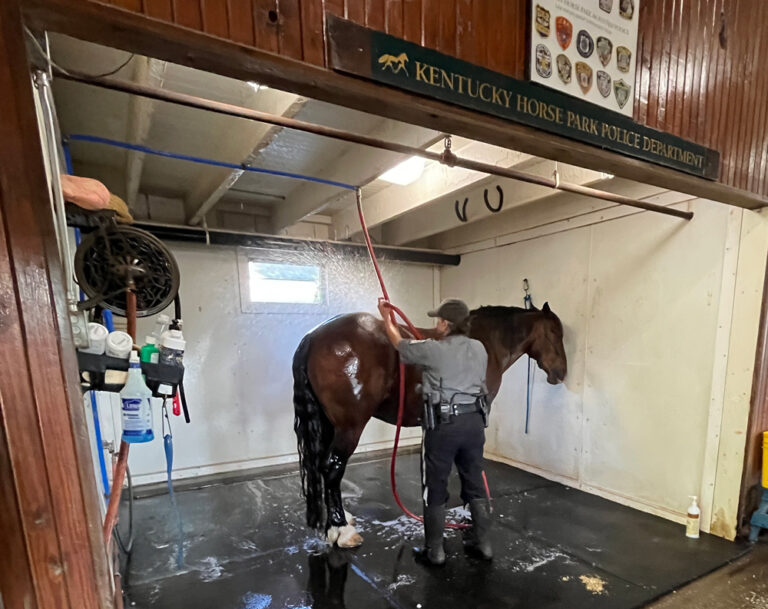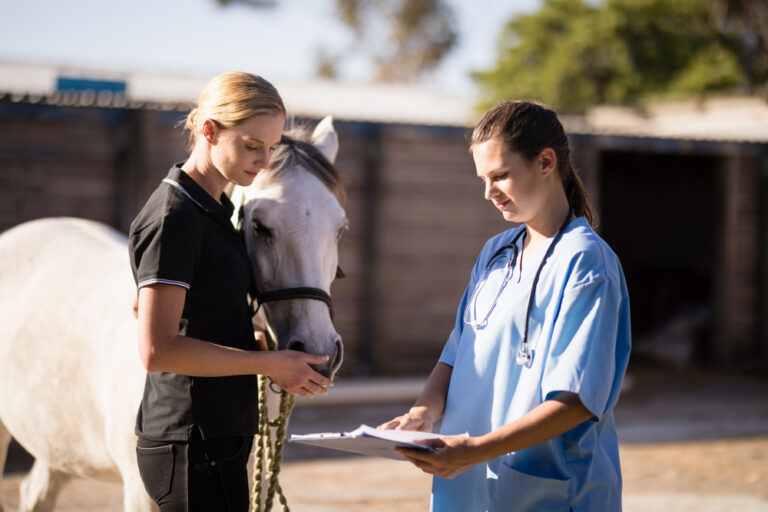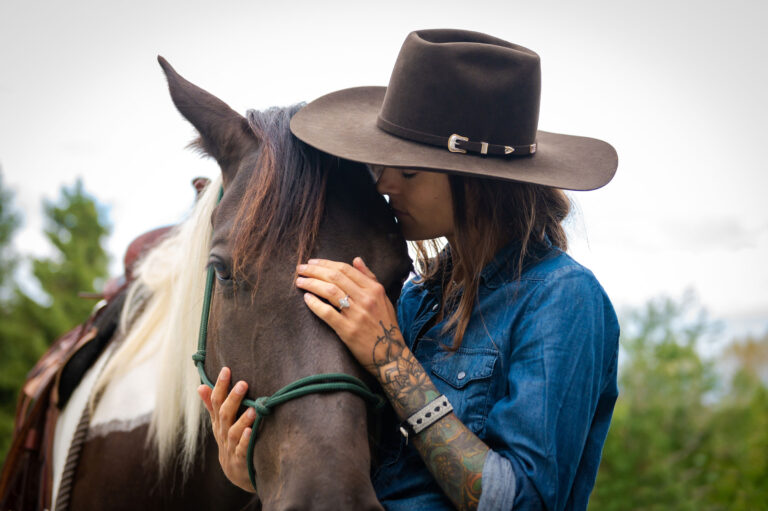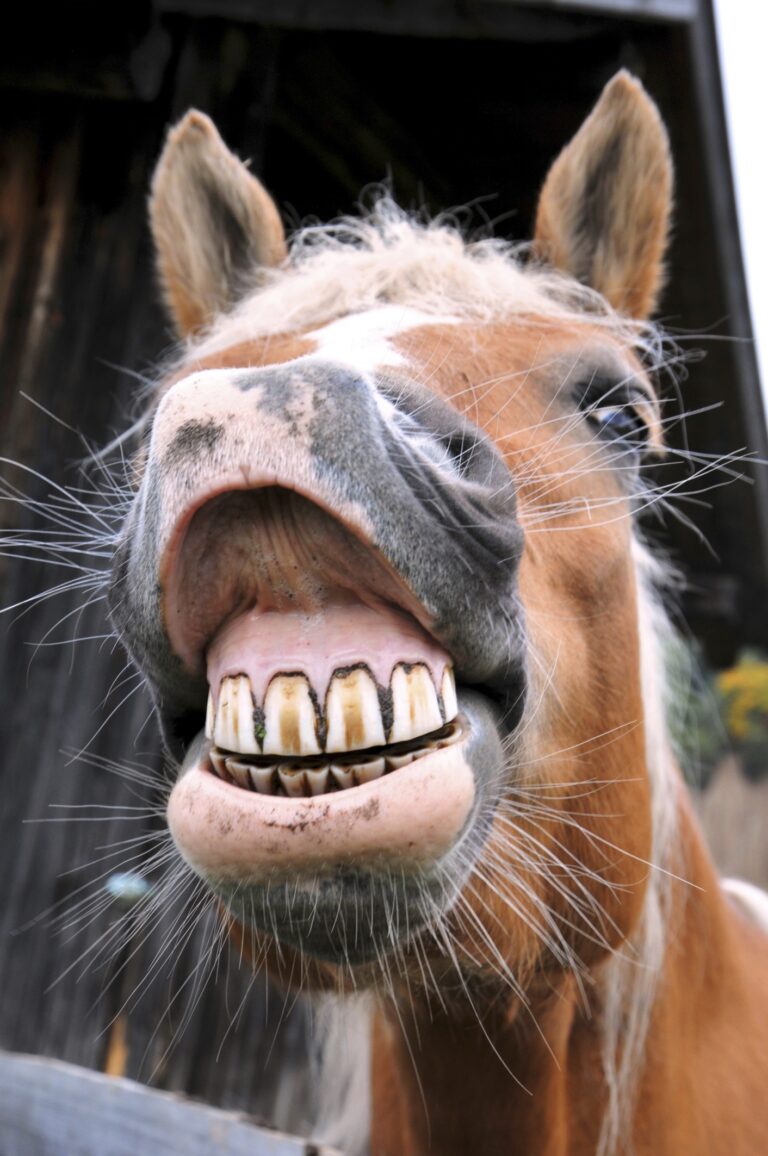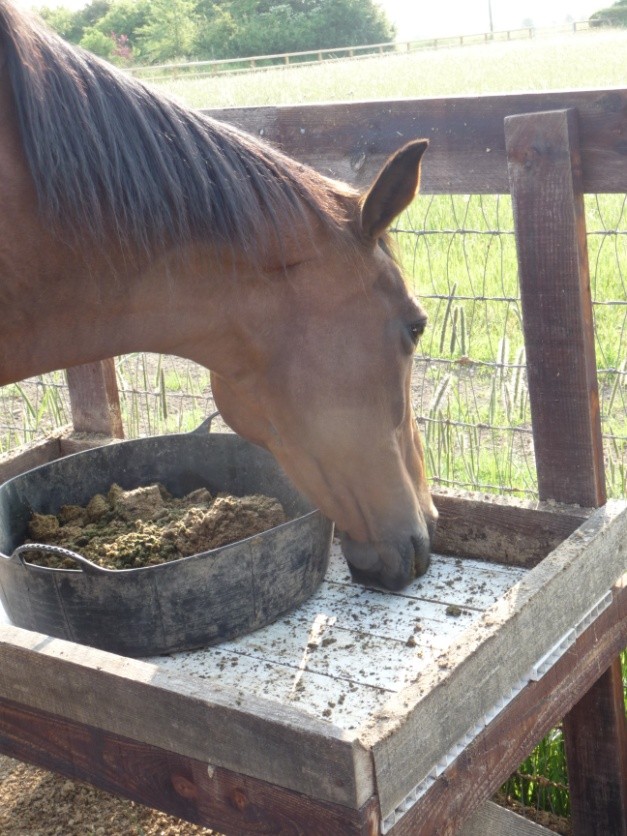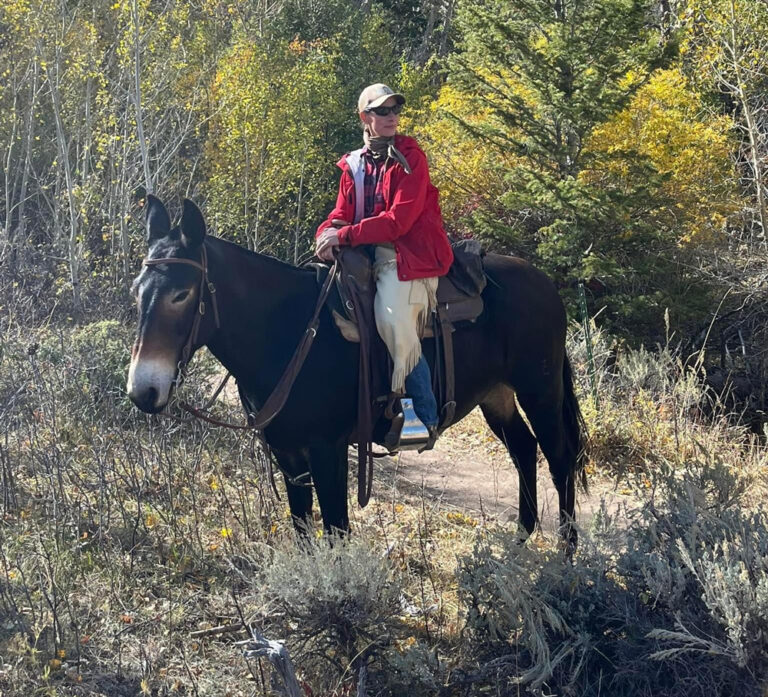Using horse toys can help break the monotony and boredom of horses confined to a stall or small paddock. Boredom and restlessness can lead to any number of vices, such as cribbing or chewing, digging holes in the stall, or kicking the walls.
Giving your horse a distraction in the form of one or more toys gives them something to do with their ever-busy mouths while keeping their minds occupied.
Safety is important when considering toys for your confined horse. Horse toys should have rounded and smooth edges and not contain any small parts. Some toys include small, non-choke-sized pieces food that can be ‘worked for’ and eaten.
Make-It-Yourself Stall Toys
A quick and inexpensive horse toy can be made by placing a few rocks, hay cubes, or carrot pieces into a plastic gallon water, juice, or milk jug and hanging it from the rafters. The sturdier the plastic bottle, the longer it will last. An inquisitive horse will beat on this with his mouth. The rocks or treats rolling around inside and the noise they make often keep a horse occupied for a time.
Another way to relieve a horse’s boredom is with a food popsicle. Fill a plastic container with water (or juice) and add fruits and/or veggies cut to an edible size that won’t cause choke. Place the container in the freezer. Once frozen solid, remove the frozen “popsicle” from the plastic and put it into your horse’s feeder.
He’ll spend a bit of time licking and gnawing at it to get at the treats while the ice melts.
Commercial Stall Toys with Food
One commercial toy is called Amazing Graze and it is available from many sources. It is a sturdy plastic cylinder with different-sized wheel-shaped ends that causes it to roll in circles so it doesn’t just roll away in a straight line.
You can put treats such as cubed apple or carrot pieces, hay cubes, or horse biscuits/cookies inside the hollow tube that screws closed on the end. As the horse rolls it around with his mouth or nose, occasionally a treat falls out of a 2” hole to reward him for his persistence.
One reviewer recommended putting in treats such as whole carrots or apples that smell good, but that can’t fall out the hole. That makes dispensing smaller treats slower. Keep in mind that you are trying to relieve boredom and alleviate frustration, so observe the horse to ensure a slower dispensing of treats doesn’t frustrate the horse.
Another favorite horse toy is Nose-It that is available from many sources. It is an octahedron-shape of sturdy plastic in which you can put horse treats or broken hay cubes. Like Amazing Grace, the horse will worry it around the stall in an effort to release the goody inside. Empty, the toy weighs three pounds, but it can hold twice that amount. The hole is only 1¾” in diameter, so it takes a concerted effort to get the treat out of the toy.
Stall Toys Without Food
Jolly Ball is another popular horse toy that is available from many sources. It is a durable large ball with a handle that fits perfectly in a horse’s mouth so he can carry it, bat it around, or throw it. This provides amusement for many playful individuals. Some are scented.
Keep in mind that some horses will literally throw the Jolly Ball or similar toy over their stall door or the paddock fence. That means you might be on ‘retriever’ duty when the ball is tossed outside the stall or paddock.
Some horse owners use the plastic orange traffic cones as toys in a horse stall or paddock. They seem to like picking them up and playing or tossing them, much like a Jolly Ball.
Hay Time
Sometimes using a slow hay feeder can stretch a horse’s feed time out, better mimicking grazing behaviors and eliminating boredom.
There are many types and styles of slow hay feeders. Talk to your friends, veterinarian, or nutrition advisor to decide which might work best for your horse. These can range from large, heavy plastic containers that can hold a full day’s worth of hay (https://porta-grazer.com/) down to small-hole hay nets (slow and ultra-slow, depending on the opening size).
Make sure that the slow hay feeder is durable and safe, as a horse will work hard to get the forage. Some nets or slow feeder hay bags are designed to hang and others to be on the ground. Make sure you know which you are getting so it is used properly.
Further Reading
- Horse Stall Design Basics. Heather Lewis. MySeniorHorse.com
- Equine Bedding Essentials. MySeniorHorse.com
- My Senior Horse Podcast: Housing Seniors. Heather Lewis. MySeniorHorse.com
- Research on Small Area Group Turnout for Stalled Horses. MySeniorHorse.com
- Equine Asthma. Dr. Amy Polkes. MySeniorHorse.com
- Horse Toys for Environmental Enrichment. Kimberly S. Brown. MySeniorHorse.com
- Equine Stall Confinement Tips. Dr. Nancy Loving. MySeniorHorse.com
-
View all posts
Nancy S. Loving, DVM, was a performance horse veterinarian based in Colorado for most of her career. She has a special interest in helping horse owners understand technical veterinary topics and research.


